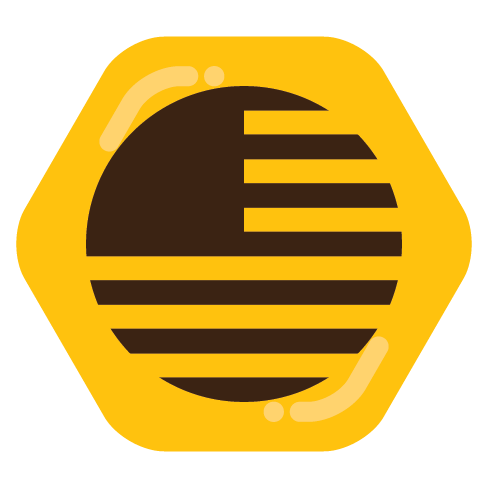It has everything to do with the consistency of the sauce and how well it sticks to the pasta. For example, spaghetti with a meat sauce isn’t a great choice because the meat won’t actually stick to the pasta and you’ll have to scoop up that meat “manually.” Better is pappardelle, which has a huge surface area that causes the meat to stick to the pasta.
- 4 Posts
- 92 Comments

 2·2 months ago
2·2 months agoIndeed. A wise wizard once said: “It is a curious thing, Harry, but perhaps those who are best suited to power are those who have never sought it.”

 2·2 months ago
2·2 months agoIt was not a prediction of victory… it was a 71% chance of winning the electoral college. Said another way, they gave her a 29% chance of losing.
https://projects.fivethirtyeight.com/2016-election-forecast/
ahhhh yes, that makes perfect sense… thank you for pointing that out! Especially since I’m not good enough with
vito know how to bulk delete the first character in specific lines, I had to manually arrow and delete.
I successfully migrated postgres 15 to 16. I followed the general idea of the guide you posted, but I found it a little easier to do a slightly different process. Here’s what I did:
docker-compose downfor the lemmy instance
2. edit thedocker-compose.ymlfile and comment out all of the services except postgres. In addition, add a new volume to the postgres service that looks something like this:- ./volumes/miscfiles:/miscfiles- edit the
docker-compose.ymlfile and add a new volume to the postgres service that looks something like this:- ./volumes/miscfiles:/miscfiles docker-compose up -d postgres(this starts just thepostgresservice from the docker compose file)docker exec -it [container name] pg_dumpall -U [username] -f /miscfiles/pgdumpall20240628(I think this will work, but it’s not exactly what I did… rather, I randocker exec -it [container name] bash, and then ranpgdumpall -U [username] -f /miscfiles/pgdumpall20240628. The end result is a dumpall file saved in the./volumes/miscfilesdirectory on the host machine)docker-compose downmv ./volumes/postgres ./volumes/postgresBAK20240628(move your existing postgres data to a new directory for backup purposes)mkdir ./volumes/postgres(re-create an empty postgres data folder. make sure the owner and permissions match thepostgresBAK20240628directory)- edit the
docker-compose.ymland update the postgres image tag to the new version docker-compose up -d postgres(you’ll now have a brand new postgres container running with the new version)docker-exec -it [container name] psql -U [username] -f /miscfiles/pgdumpall20240628(again, I think this will work, but Ibashed in and ran the command from within the container. This also allows you to watch the file execute all of the commands… I don’t know if it will do that if you run it from the host.)docker-compose down
12. edit thedocker-compose.ymland un-comment all of the other services that you commented out in step 2docker-compose up -d
Hopefully that helps anyone that might need it!
edited to reflect the comment below

 6·2 months ago
6·2 months agoI agree… I was simply clarifying that Nate Silver did NOT predict that Hillary would win (nor is he predicting that Trump will win this election), which is a common misunderstanding about probability. For these types of models to be meaningful to the public, there needs to be literacy on what is meant by the percentages given. Really, I’m just reinforcing rodneylives’ point from another angle!

 132·2 months ago
132·2 months agoI don’t remember him predicting that she would win. His model (https://projects.fivethirtyeight.com/2016-election-forecast/) gave her a 71% chance of winning. 71% is a long way from 100%, and the result of that election definitely fit within the model.
That said, you are absolutely correct… we need to keep shining a light on the realities of each of these candidates, because in the light of day Biden is a much better choice than Trump.
Thank you, that’s super helpful!

 3·3 months ago
3·3 months agoStop j’terrorizing me!
Depending on what exactly you’re looking for, Photostructure might be a good option. It’s got a great UI for viewing photos, and it’s meant to play well with other Metadata software.

 2·4 months ago
2·4 months agoI don’t think I’d call them assholes… more just shortsighted about the realities of selling an album, specifically in how you refer to the album both in speech and in writing.

 2·4 months ago
2·4 months agoThere’s lots of youtube content on this subject… here’s a decent jumping off point, if you’re interested: https://www.youtube.com/watch?v=7Nw6qyyrTeI
I have
server2(which replacedserver1). I also have ‘nvr1’.

 1·6 months ago
1·6 months agoUnderstood, but OP mentioned that he wanted something without a backup camera, so that’s why I was asking for clarification.

 1·6 months ago
1·6 months agoMy favorite is plain old wordle.

 4·6 months ago
4·6 months agoThis game is not fun. It’s not at all clear how the words relate, to the point where I got a top 10 word in the first 10 guesses, and it still took over 100 guesses to find the keyword.
I found it to be an unrewarding waste of time.

 14·6 months ago
14·6 months agoCan you clarify exactly what you mean by a “dumb car”? Do you just mean that it doesn’t have a screen in the cockpit? Or something else?

 1·6 months ago
1·6 months agoI think it depends on the airline. On my recent trip I noticed that American Airlines was charging to pick ANY seat. You could avoid the charge by letting it auto-assign the seat. Your idea to check in physically and request a certain seat MIGHT work, but you have to consider the timing. Most other passengers will have checked in online earlier and already have a seat assigned… If you wait until you arrive at the airport the seat selection might be limited. I like to check in online as early as possible so I can decide if I want to pay for a specific seat.
Good luck!

 10·6 months ago
10·6 months agoI’ve been a best man twice and both times I quoted from “The Prophet” by Kahlil Gibran, specifically the “On Love” section. “On Marriage” and “On Children” also have appropriate words for a wedding.



I hear you… it’s definitely not about one tasting better than others, but maybe more about the eating experience. I do think there’s a legitimate argument about how different pasta shapes encourage different pasta to sauce ratios, but at the end of the day it’s just the two elements coming together and the taste is what it is. We should all enjoy it the way we want to! I just wanted to explain why some people talk about certain sauces and certain pasta shapes “belonging” together.